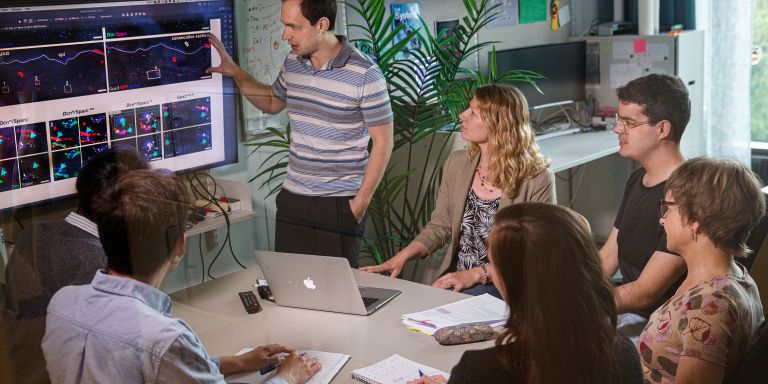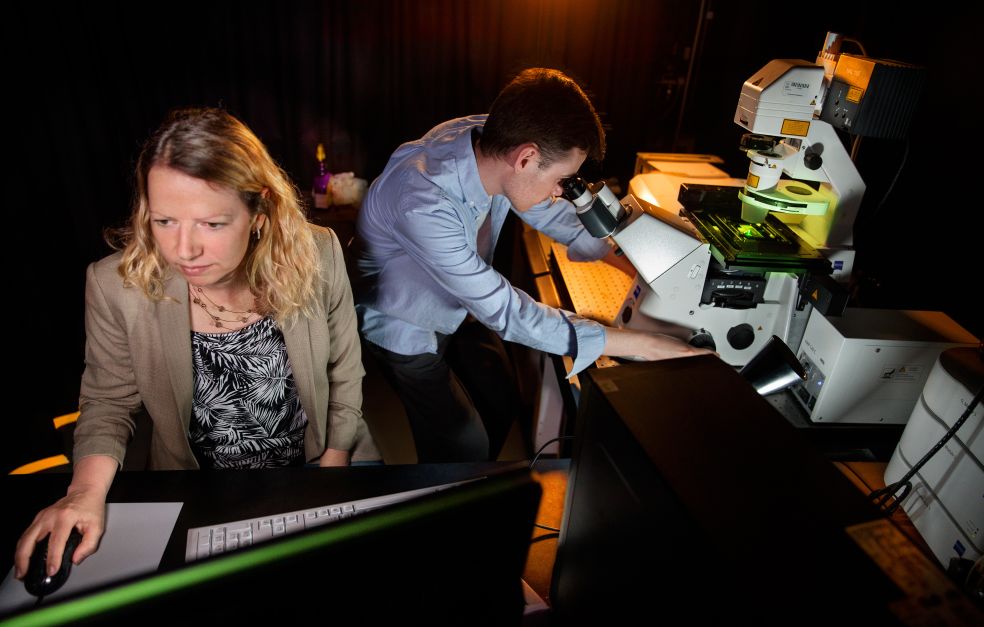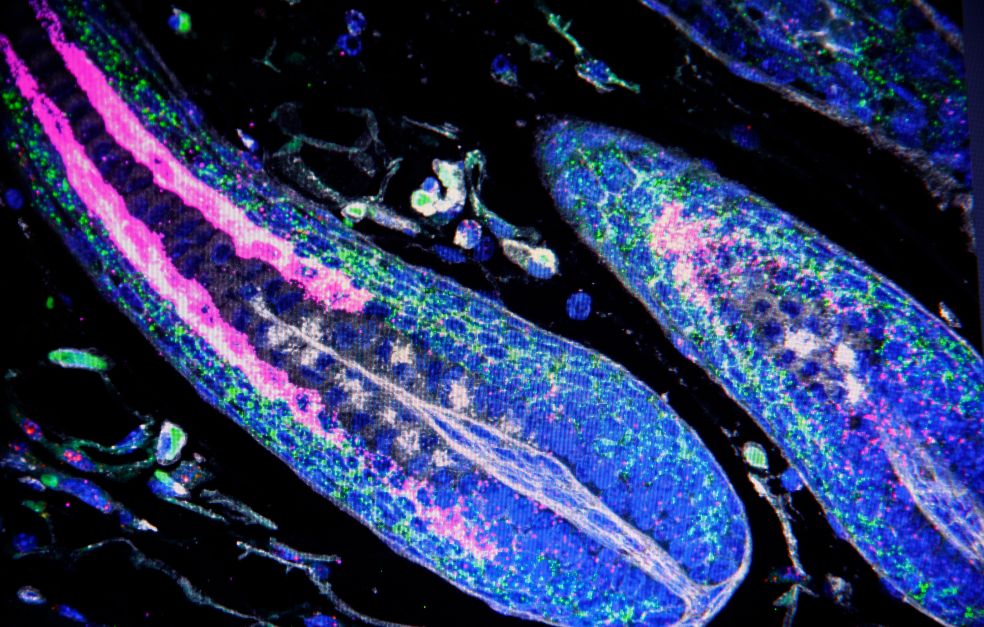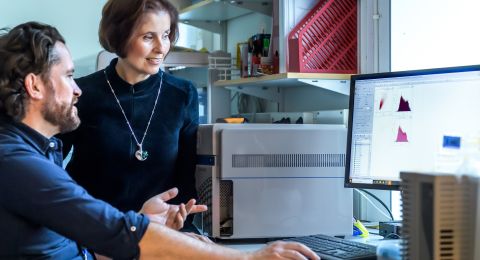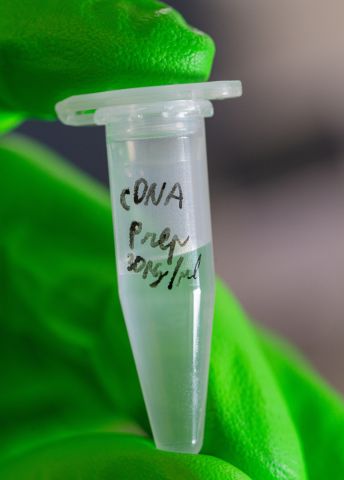
Project Grant 2022
Metabolic control at the stem cell’s point of no return
Principal investigator:
Maria Kasper, Associate Professor of Cell and Molecular Biology
Co-investigators:
Karolinska Institutet and University of Helsinki
Pekka Katajisto, Professor
Institution:
Karolinska Institutet
Grant in SEK:
SEK 32 million over five years
Stem cells are the origin of all other cells in the body. They are unique in that they can divide again and again, and mature into various specialized cells in the body. Kasper has devoted countless hours of research exploring these fascinating and vital cells, which constantly develop, maintain and restore our tissues.
“Stems cells are found in nearly all of our organs and are essential to renew our body. They have two main tasks: either they divide into new stem cells – exact copies of themselves, or they develop into specialized cells. This ability is what makes them so remarkable; it means that if tissue is damaged, stem cells can ensure it repairs itself. All stem cells need to find a balance between renewing themselves and developing into specialized cells to maintain our body functions,” Kasper explains.
And it is that balance, and the processes regulating stem cell division, that lie at the heart of a new research project funded by Knut and Alice Wallenberg Foundation. Kasper, along with Pekka Katajisto and team members from their research groups, will be investigating why stem cells decide at a certain point – a point of no return – to either form copies of themselves, or to develop into specialized cells. Greater knowledge about this process will improve the prospects of controlling it.
“If we can learn how to influence and control stem cell decisions, we will open the door to completely new therapies in many fields,” says Kasper.
Helping cancer research
An area in which this knowledge may have a major impact is the battle against various forms of cancer. A characteristic of cancer is that stem cells are less able to create specialized cells and instead start uncontrolled division into new stem cells. Stopping that process may provide an important key for effective cancer treatment.
Another example is within the field of regenerative medicine, where the goal is to replace damaged tissue with new tissue. With age, the ability to create new stem cells declines, which makes wound healing more difficult. If researchers find a way of persuading stem cells to remain as stem cells rather than specialize, it may be possible to mitigate that decline.
The project focuses on stem cells in the skin. Kasper believes that the results of this research project may also aid our understanding and treatment of various skin diseases.
“There are hundreds of skin diseases, all of which are related in some way to stem cell changes. So there is huge potential if we can use this knowledge to find new tools to treat them,” she says.
Revealing when and why cells divide
The project is a collaboration between two laboratories with different approaches, and it is the combination of these two perspectives which makes Kasper strongly belief in the project’s great potential. Her team is focusing on being able to see when a cell has decided to divide. She describes this as certain molecules being “switched on,” like a light bulb. Pekka Katajisto is studying whether stem cell metabolism is linked to their fate decision after cell division, thereby potentially answering the question of why they choose one or the other route.
“Our two research teams very much complement one another. Together we can ask new questions and gain a more coherent picture, which we would never be able to do on our own,” she says.
To see when a stem cell has made its cell fate decision coupled with cell division, Maria’s team has used single-cell RNA sequencing, a new technique that enables researchers to examine biological functions in each individual cell. By studying thousands of snapshots showing what a cell is doing at every moment one can gain a detailed picture of the entire process.
“These snapshots enabled us to see when the molecule’s light bulb is switched on, so that we now can see exactly when the stem cell has decided. This unique discovery gives us a tool that didn’t exist before,” she says.
Metabolism as the key
The Katajisto lab has already identified a clear link between stem cell metabolism and division outcome. The discovery, which they made by examining stem cell behavior over time, enabled them to see how the metabolism of the organelles – the cell counterpart of organs – differed after cell division. The daughter cells containing immature organelles remained as stem cells, whereas those with mature organelles developed into specialized cells.
The research team has therefore taken a major step toward understanding and being able to change stem cell metabolism. They intend to further develop this ability.
“This is really exciting, particularly since no one has ever before been able to visualize the relationship between the metabolism of stem cells and their own ‘life choice’ in living tissues. We hope to use stem cell metabolism to influence stem cell decisions at exactly the right time, steering them in the right direction as we do so,” Kasper says.
Text Ulrika Ernström
Translation Maxwell Arding
Photo Magnus Bergström
